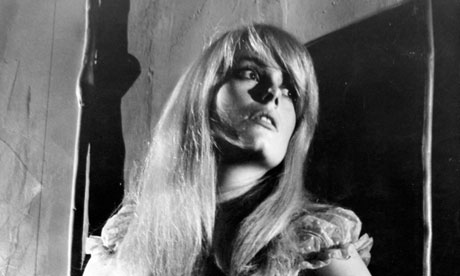During my recent holiday in the North-East, I was saddened by the news that the great British cinematographer Gilbert Taylor had passed away at the age of 99. So, having just returned, I thought I would collect my thoughts together into a little tribute.
Tributes are regularly paid to great actors, screenwriters or directors - much as I have done on here - but cinematographers often don't get the credit that they deserve. Like lightning, sound, costume or make-up, they are often just regarded as an amorphous part of "the crew", for whom the director takes all the credit if the film in question is well-received. This is to some extent a legacy of the auteur theory, which remains a useful shorthand when reviewing but overlooks the collaborative nature of film as a medium.
 You can make a good argument that a cinematographer is every bit as important as a director in creating and ensuring the visual sensibility of a given film. The cinematographer (director of photography in the US) is responsible for making all the director's visual decisions become a practical reality, from the choice of lenses, lights and filters to the movement and focus of the camera. They tend to have very close relationships with directors, which might explain why certain directors have consistently worked with the same one over their career - think of the Coen Brothers with Roger Deakins, or Christopher Nolan with Wally Pfister.
You can make a good argument that a cinematographer is every bit as important as a director in creating and ensuring the visual sensibility of a given film. The cinematographer (director of photography in the US) is responsible for making all the director's visual decisions become a practical reality, from the choice of lenses, lights and filters to the movement and focus of the camera. They tend to have very close relationships with directors, which might explain why certain directors have consistently worked with the same one over their career - think of the Coen Brothers with Roger Deakins, or Christopher Nolan with Wally Pfister.
 Taylor worked with Roman Polanski on three occasions early in his career, on Repulsion, Cul-de-Sac and Macbeth - and in each case he compliments Polanski brilliantly, with lighting decisions and camera movements that really ramp up the tension. But Taylor was equally at home in other genres, and made the transition from black-and-white colour to pretty seamlessly. His filmography reads like a catalogue of cinematic milestones, and many of the films on which he serves have been praised for their distinctive visuals.
Taylor worked with Roman Polanski on three occasions early in his career, on Repulsion, Cul-de-Sac and Macbeth - and in each case he compliments Polanski brilliantly, with lighting decisions and camera movements that really ramp up the tension. But Taylor was equally at home in other genres, and made the transition from black-and-white colour to pretty seamlessly. His filmography reads like a catalogue of cinematic milestones, and many of the films on which he serves have been praised for their distinctive visuals.
 In the 1950s Taylor set the bar high for good-looking war films with Ice Cold in Alex and The Dambusters, widely regarded as one of the best British films of all time. In the 1960s he worked on early episodes of The Avengers (no, not that one), experimented with Richard Lester and The Beatles on A Hard Day's Night, and rubbed shoulders with Stanley Kubrick on Dr. Strangelove, arguably the best film of that decade. In the 1970s and 1980s, he courted controversy with Alfred Hitchcock's Frenzy and Richard Donner's The Omen, argued feverishly with George Lucas on the set of Star Wars, and collaborated twice with Mike Hodges, first on Damien: Omen II and later on Flash Gordon.
In the 1950s Taylor set the bar high for good-looking war films with Ice Cold in Alex and The Dambusters, widely regarded as one of the best British films of all time. In the 1960s he worked on early episodes of The Avengers (no, not that one), experimented with Richard Lester and The Beatles on A Hard Day's Night, and rubbed shoulders with Stanley Kubrick on Dr. Strangelove, arguably the best film of that decade. In the 1970s and 1980s, he courted controversy with Alfred Hitchcock's Frenzy and Richard Donner's The Omen, argued feverishly with George Lucas on the set of Star Wars, and collaborated twice with Mike Hodges, first on Damien: Omen II and later on Flash Gordon.
 Any of the films I've listed here are a fitting way to pay tribute to Taylor's talent. He was an incredible cinematographer whose impact will be felt on British film for decades to come. RIP.
Any of the films I've listed here are a fitting way to pay tribute to Taylor's talent. He was an incredible cinematographer whose impact will be felt on British film for decades to come. RIP.
Daniel
Tributes are regularly paid to great actors, screenwriters or directors - much as I have done on here - but cinematographers often don't get the credit that they deserve. Like lightning, sound, costume or make-up, they are often just regarded as an amorphous part of "the crew", for whom the director takes all the credit if the film in question is well-received. This is to some extent a legacy of the auteur theory, which remains a useful shorthand when reviewing but overlooks the collaborative nature of film as a medium.




Daniel


Comments
Post a Comment